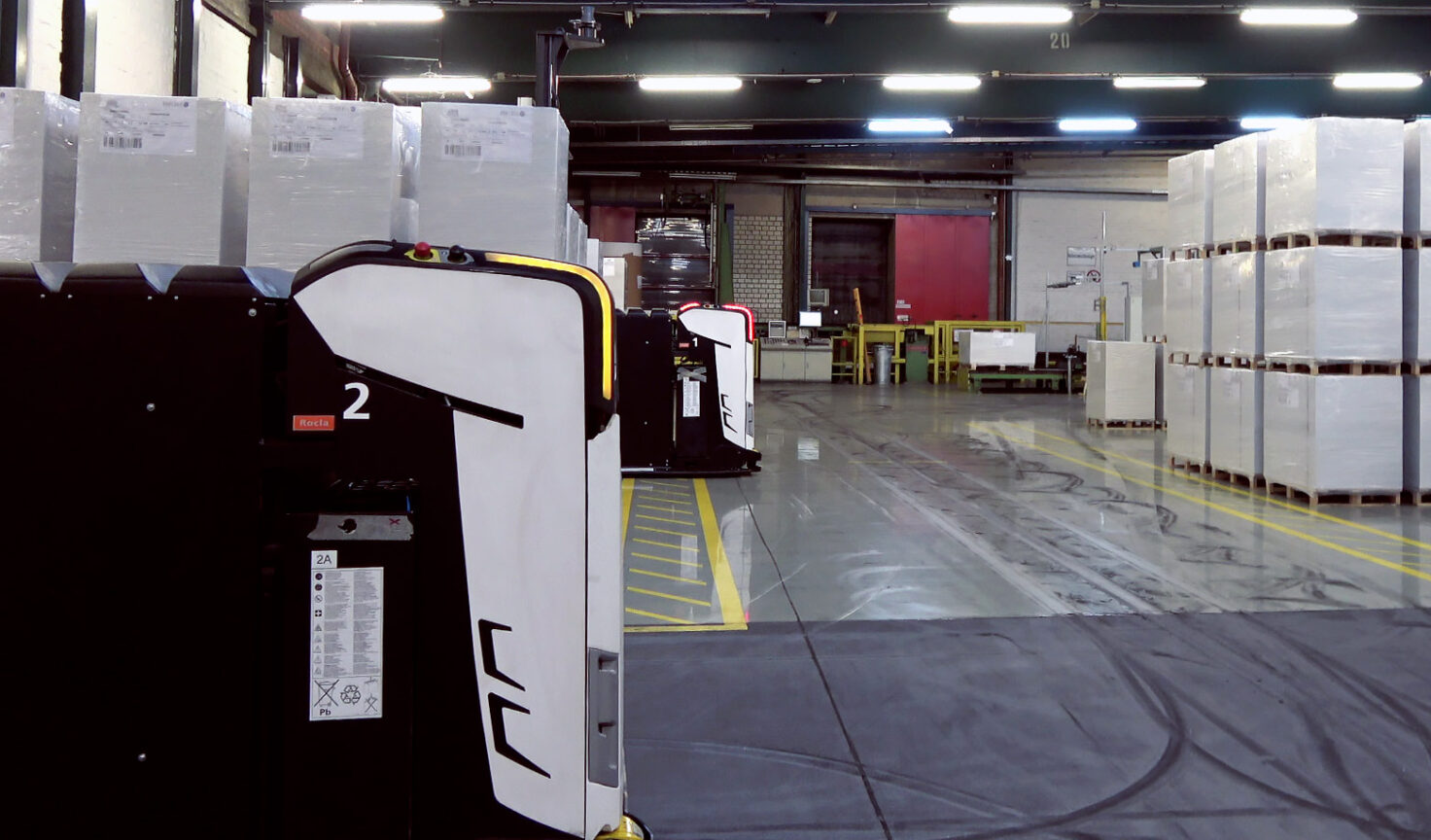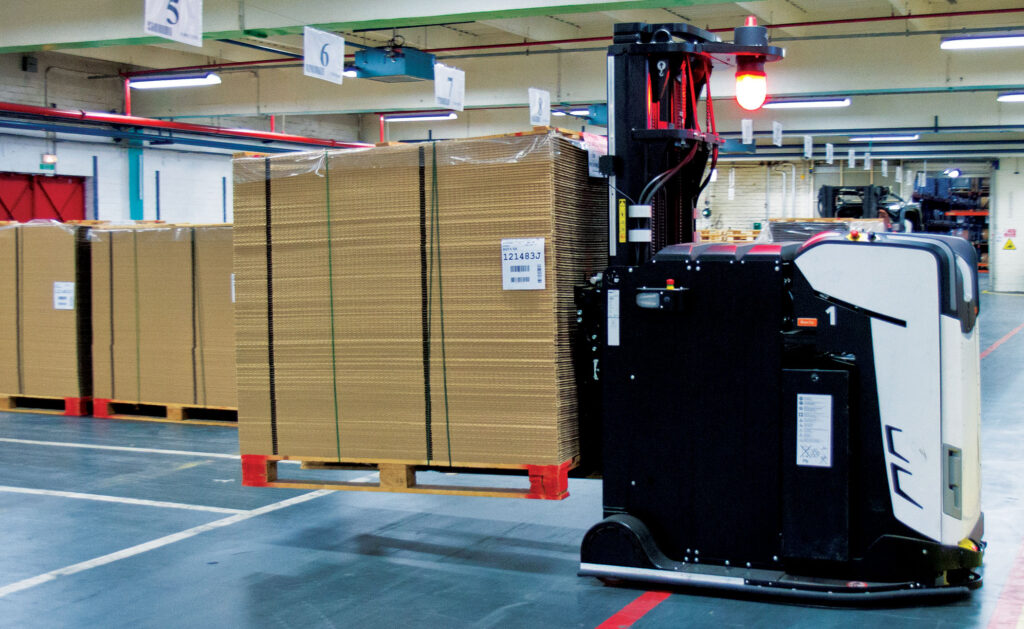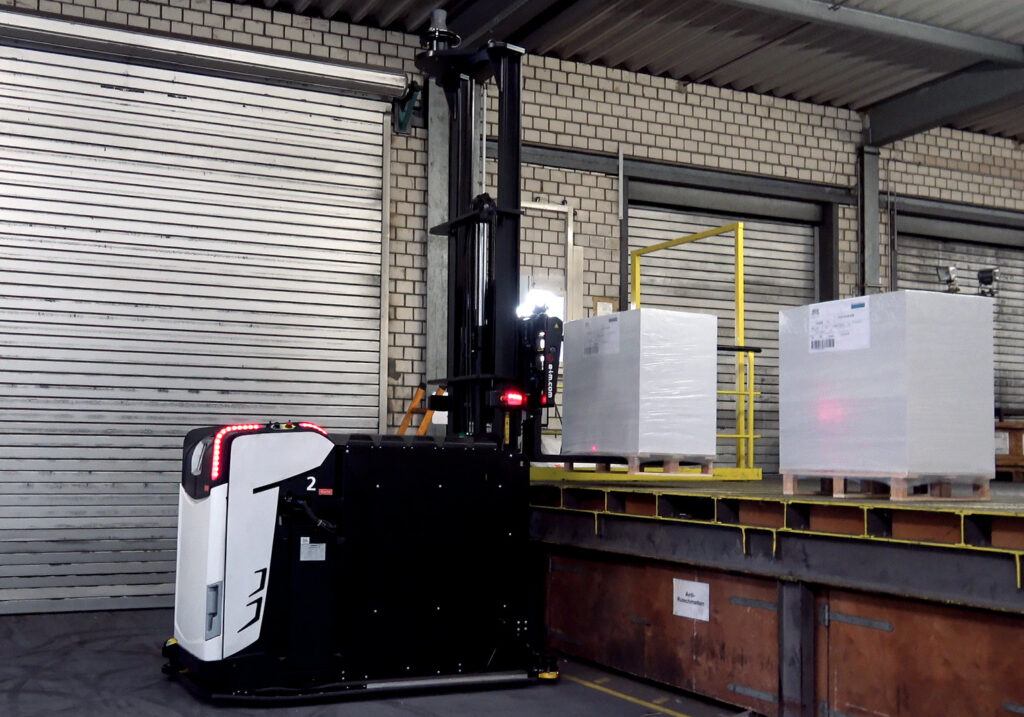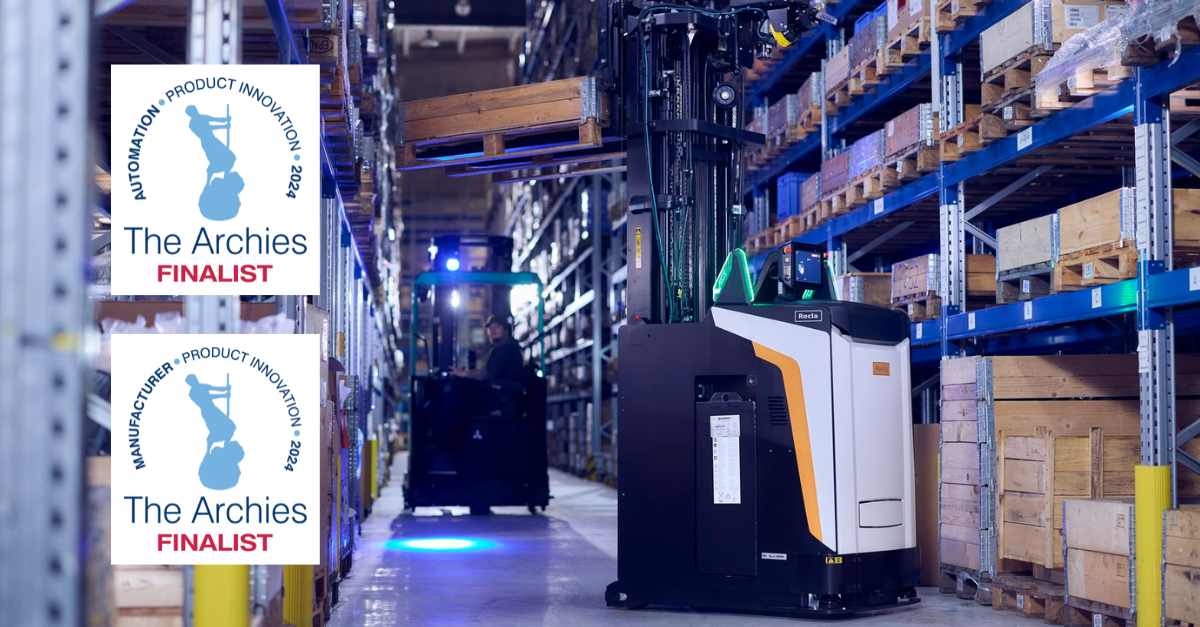Paper and board industry AGVs for pallet handling
Blog post by Antti Aakko
Pallets are used to transport goods throughout the paper industry: paper and board mills, converters and printing houses, for example. These processes can be automated with AGVs. As applications vary, AGVs can be equipped with special features depending on the load. In this blog, I’ll walk you through what to take into account when considering using AGVs in the paper industry pallet handling applications.

When talking about the paper industry, the product of the mill is usually a roll. After the converting process, finished or semi-finished products are generally placed on pallets and either transported with forklifts or conveyors. It is also possible that a roll is placed on a pallet for transport or storage; usually, the roll is relatively small in this situation. Pallets are utilised in the production process not only for handling products but also for moving packaging material and other supplies.
There are several tasks for pallet handling AGVs within the converting plants or paper mill’s finishing departments:
- Receiving and warehousing of the empty pallet stacks
- Transport of empty pallet stacks into the machines
- Product pallet transportation and storing
- Shipment preparation
- Raw materials pallet handling
- Waste container handling
Pile them up
Let’s think about a paperboard mill that converts some of its production into sheets directly at the mill. In this situation, the pallets used are generally custom-made for the ordered sheet size. Pallet size can and will vary greatly depending on the requested sheet size. Pallets are either single or double pallets tied together; thus, AGVs must be equipped with adjustable forks. AGV will adjust the fork width automatically based on the current pallet size. If products are more standard and shipped in standard-sized pallets, the AGV can also have fixed forks. Standard pallets will also make the empty pallet process simpler.
The supplier delivers stacks of pallets based on customer orders to the mill. Stacks of pallets are manually unloaded and placed on a conveyor, which hands the pallet stacks to the AGV system. Based on the WMS orders, the AGV system will pick up the pallet stacks and store them on floor buffer lines. Based on the request of the customer’s WMS (or MES), the AGV system will deliver the correct empty pallets to the sheeter. Depending on the request, these could be whole stacks or partial stacks.

Wrap, pack, ship
After pallets are filled with sheets, they are often wrapped before shipping. This can be done directly after sheet cutting, either by connecting sheeters to the packing line with conveyors or by transporting pallets from sheeters to the packing line with AGVs. If the AGV system picks up the pallet from the sheeter without wrapping, the load must be stable for the AGV to handle. There are differences between different materials; some stacks of sheets are more stable than others. For example, some materials tend to start peeling from the top layer when airflow occurs. In this kind of situation, we should somehow secure the top layers. This can be something on the load: quick wrap on the corners or a heavier top layer. Another option is installing a load support device into the AGV to support the top layers while the AGV is transporting the load.
After packing, the AGV system will pick and store the finished pallets in the warehouse. Packed pallets are picked by AGVs and stored in the warehouse or moved directly to the shipping area. The AGV system will prepare shipments based on WMS instructions. Shipments are prepared for the staging area next to the shipping bays.

What else makes sense to automate?
Packaging materials or other raw materials than the converted products are usually required somewhere during the process. These materials are generally delivered to the point of use on pallets. This material stream is probably not as significant when considering pallets per hour as the outfeed of the converting process, but it does make sense to automate. Automating will ensure that the required raw materials are available for operations. Automation also eliminates manual forklift operations from the plant floor level, increasing the working environment’s safety.
In operations where paper industry products are converted into finished and semi-finished products, there is practically always a need for waste handling. Waste containers are usually located near the converting machines and must be emptied regularly. For example, the AGV system can be instructed to empty containers once per shift or when requested.
Send me a message or give me a call, and let’s chat more.



